As beautiful a city as Reggio Calabria is, many visitors come just for the famous Riace Bronzes on display at the town’s world-class archeological museum. In and out. However, those who dally a bit longer discover not only the stunning waterfront, but Corso Garibaldi, the lovely pedestrian shopping street. And right at its center is the Pinacoteca Civica or the Civic Art Museum of Reggio Calabria.
HISTORY OF THE ART MUSEUM OF REGGIO CALABRIA
While the Civic Art Museum of Reggio Calabria was officially inaugurated in 2008, the collection’s origins go back to the 19th century. Major historical events, such as the catastrophic earthquake of 1908, together with the founding of the city’s national archeological museum contributed to the shuffling of the artworks amongst various palazzi and even a provisional pavilion for several years in the aftermath of the debilitating seismic destruction.
The historic collection, which focussed on Italian art from the 15th to 19th centuries, was displayed on the upper floors of Reggio’s archeological museum for many years. Today, the civic art museum also features works by 20th-century Calabrian artists.

Exhibit space with Murano chandeliers at the Pinacoteca Civica in Reggio Calabria
The Pinacoteca Civica makes its home in a wing of the municipal theater, Teatro Comunale “Francesco Cilea,” built between 1920 and 1931. The entrance is to the left of the theater doors and to reach the exhibits on the second floor, the visitor has the choice of a free-floating staircase or a glass elevator in the ground floor’s contemporarily designed space.
OLD MASTERS: ANTONELLO DA MESSINA AND MATTIA PRETI
The art is displayed chronologically and begins with two 15th-century paintings on wood panels, the most valuable of the collection.
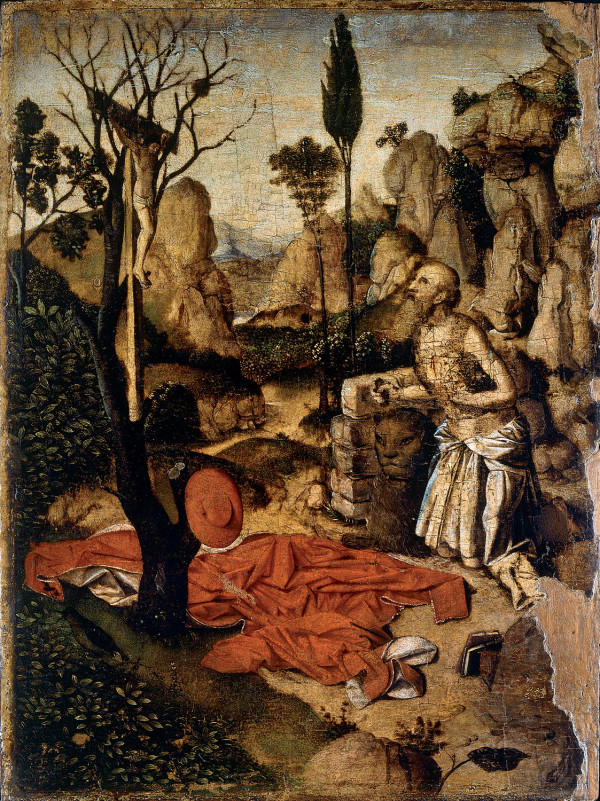
San Girolamo penitente (St. Jerome Penitent, c. 1460) by Antonello da Messina (1430-79), tempera on board, 39.9 x 30 cm, photo courtesy of the Pinacoteca Civica di Reggio Calabria
“San Girolamo penitente” (St. Jerome Penitent) and “Tre Angeli in Visita ad Abramo” (Three Angels Visiting Abraham) are two early works by Antonello da Messina (1430-79), who as his name would indicate came from the city just across the waters of the Strait. The influential Renaissance artist with a penchant for early Flemish painting would receive his first documented commission in Reggio in 1457. The two paintings in the art museum of Reggio Calabria are thought to date from around 1460.
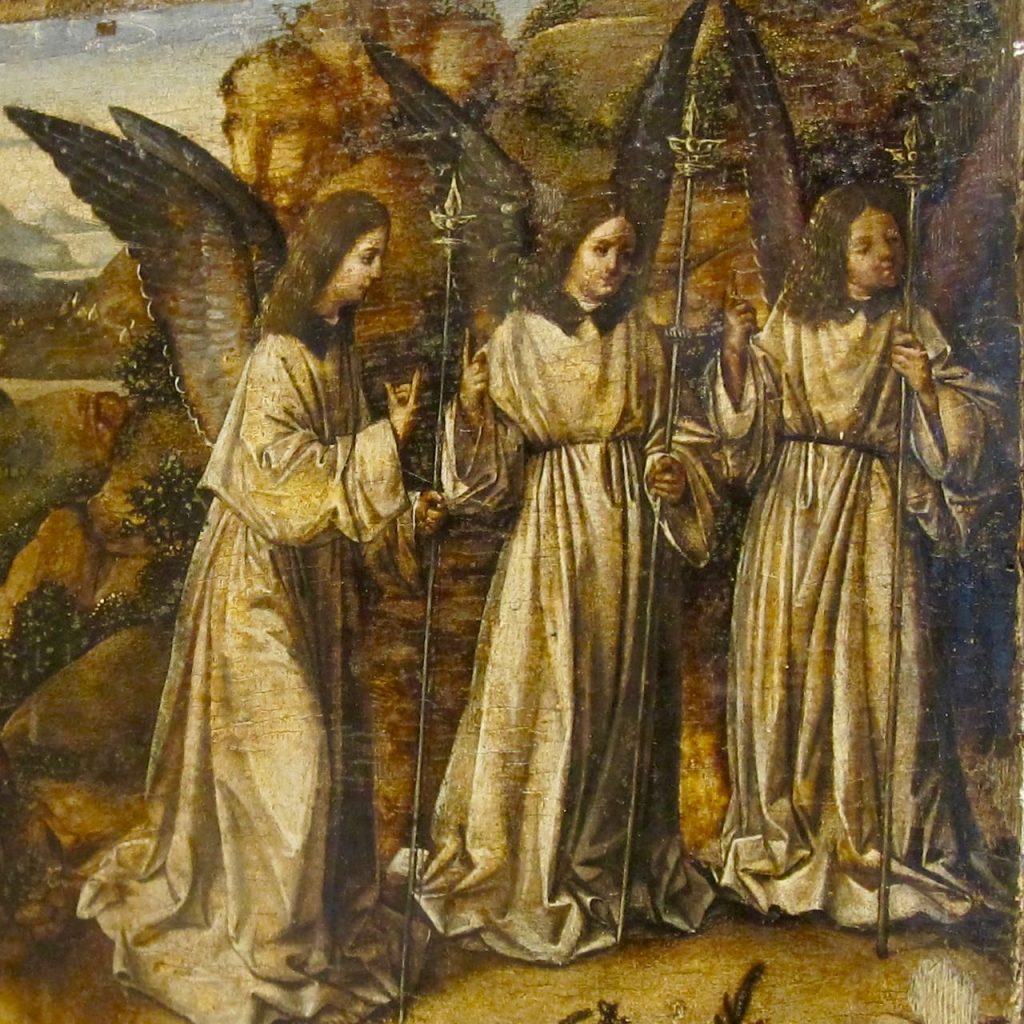
Detail of Tre Angeli in Visita ad Abramo” (Three Angels Visiting Abraham, c. 1460) by Antonello da Messina (1430-79), tempera on panel, original 21.4 x 29.3 cm
Another prized work is “Il ritorno del figliol prodigo,” (Return of the Prodigal Son, c. 1656) by Calabria’s own Mattia Preti (1613- 1699). Known as The Cavaliere Calabrese or Calabrian Knight, Preti was born in the small town of Taverna in the Province of Catanzaro.
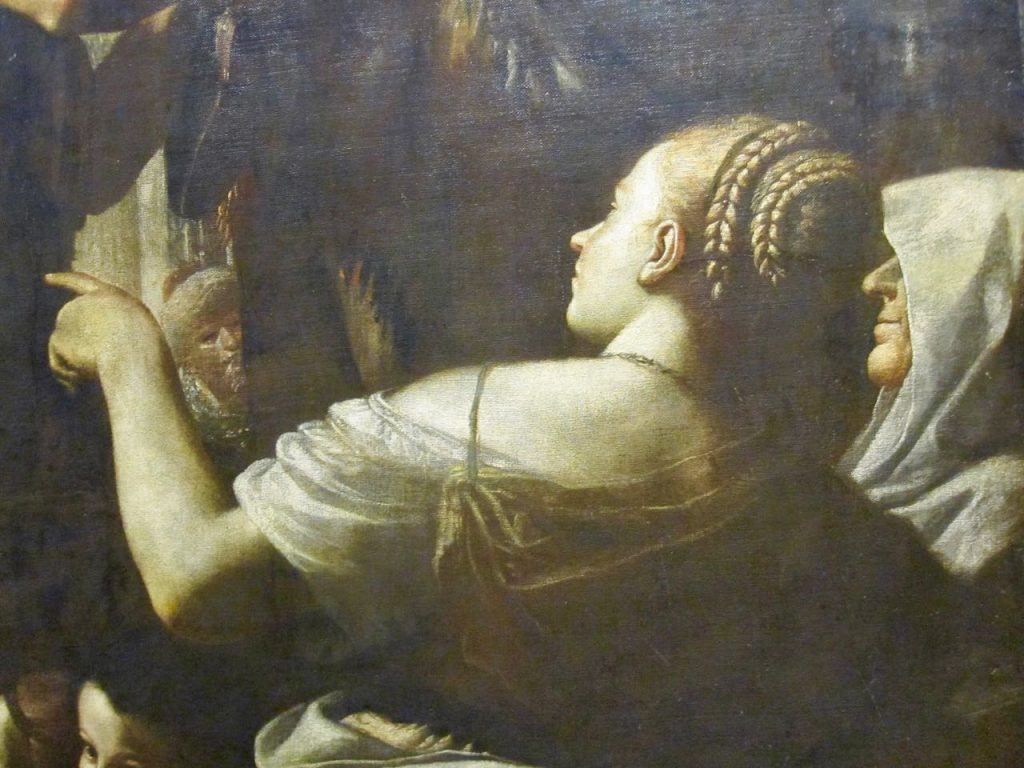
Detail of Il ritorno del figliol prodigo (Return of the Prodigal Son, c. 1656) by Mattia Preti (1613- 1699), oil on canvas, original size 215.8 x 231 cm
SOUTHERN HISTORY AT THE ART MUSEUM OF REGGIO CALABRIA
Several works highlight important historical figures and moments for Calabria and Southern Italy. Francesco Jerace (1853-1937), sculptor from Polistena, Calabria is represented with a marble bust of Nossis of Locri (1920), the Greek poetess from ancient Locri Epizephyrii.

Nosside di Locri (Nossis of Locri, 1920) by Francesco Jerace (1853-1937), marble, 54 x 56 x 32 cm
Andrea Cefaly (1827-1907) from Cortale in the Province of Catanzaro fought with Garibaldi and put his experiences on canvas as in the “Episodio della battaglia del Volturno” depicting an episode in the battle of the Volturnus River between Capua and Caserta, Campania in 1860.
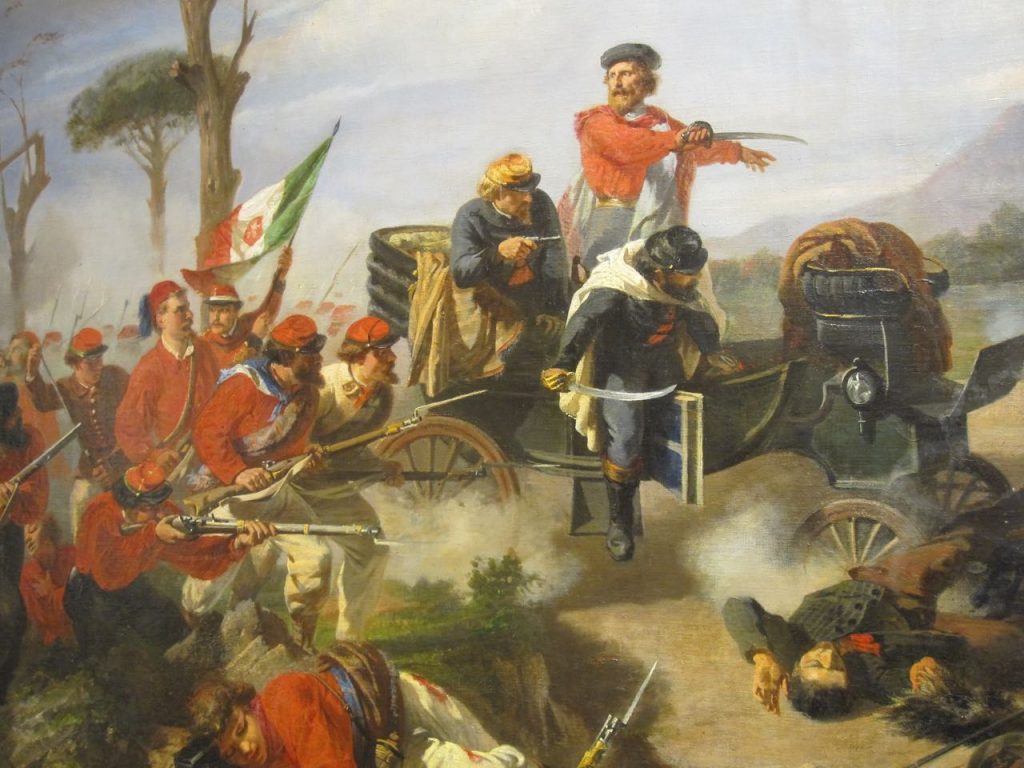
Detail of Episodio della battaglia del Volturno (Episode of the Volturnus Battle, 1860) by Andrea Cefaly (1827-1907), oil on canvas, 133 x 211 cm
And amongst the numerous portraits of local personages is a painting by an unknown Southern artist of prominent Reggio politician Pietro De Nava (1870-1944).
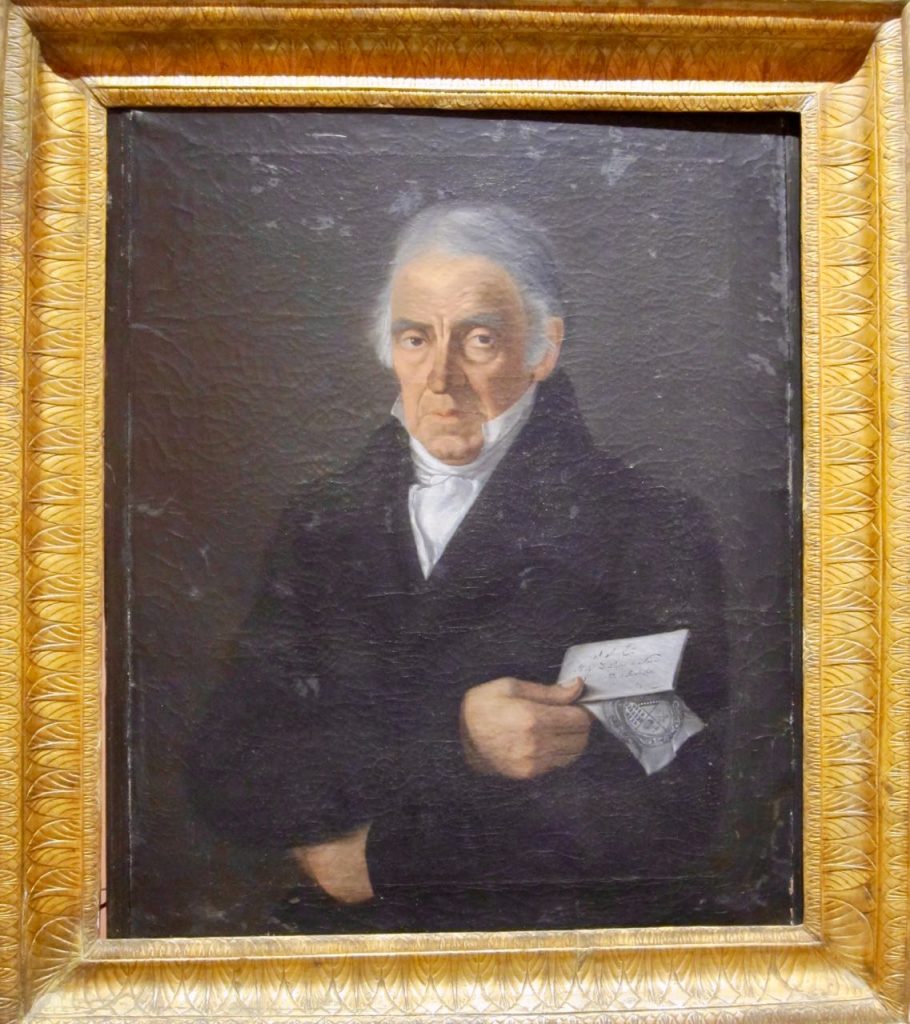
19th-century Portrait of Pietro De Nava (1870-1944) by an unknown Southern Italian artist, oil on canvas, 79 x 63 cm
CALABRIAN LANDSCAPE AT THE ART MUSEUM OF REGGIO CALABRIA
I enjoy seeing paintings of the local Calabrian landscape executed by people from the area. The vastness of the Aspromonte plain and rural life is celebrated by Reggio Calabrian artist Giuseppe Benassai (1835-1878) in his “Aspromonte o La Casetta dei Forestali” (Aspromonte or the Foresters’ Home) of 1869.
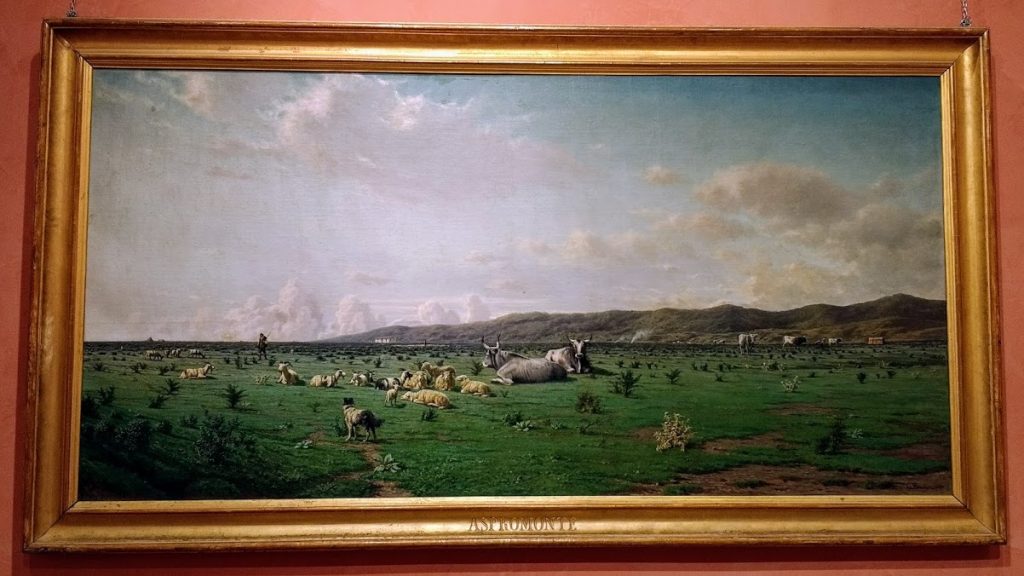
Aspromonte or La Casetta dei Forestali (The Foresters’ Home, 1869) by Giuseppe Benassai (1835-1878), oil on canvas 125 x 250 cm
The classic swordfish hunt carried out on Calabria’s Tyrrhenian Sea is depicted in “Pesca del pesce spada” by Annunziato Vitrioli (1830-1900), artist and musician of Reggio Calabria.

Pesca del pesce spada or the Swordfish Hunt by Annunziato Vitrioli (1830-1900), oil on canvas, 198 x 84 cm
A joyous spring with the harvesting of grain amidst fruit trees and poppies is portrayed in Giuseppe Spadaro’s (1879-1928/30) “Maggiolata” or Song of the Spring Festival from 1923.

Maggiolata (Song of the Spring Festival, 1923) by Giuseppe Spadaro (1879-1928/30), oil on canvas, 96 x 150 cm
A STORY OF LIFE IN CALABRIA AT THE ART MUSEUM OF REGGIO CALABRIA
Numerous paintings in the Piancoteca Civica illustrate scenes from daily life, an existence full of hard work for most. Eugenio Citriniti (1897-?) of Catanzaro captures a peasant at rest in his “Riposo di contadino.”
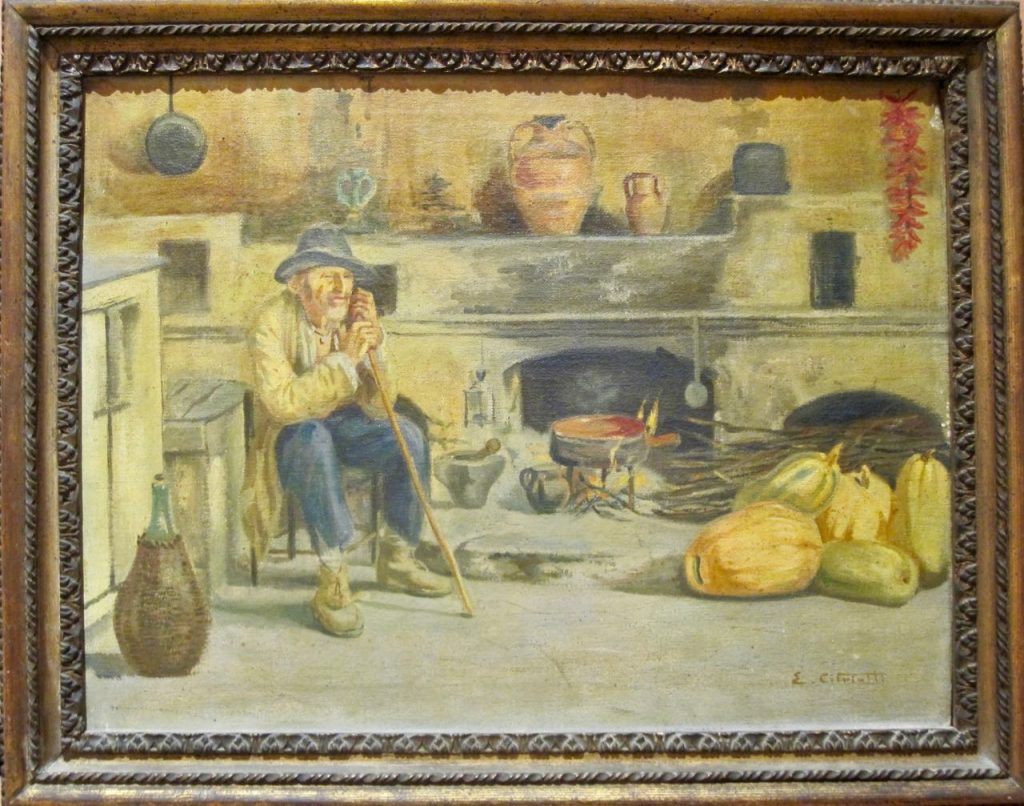
Riposo di contadino – Peasant’s Repose by Eugenio Citriniti (1897-?), oil on canvas, 44 x 58 cm
“Pescivendoli” (1951) of Vincenzo Caridi (1913-1989), artist and teacher from Reggio Calabria, shows fish vendors of the not too distant past.
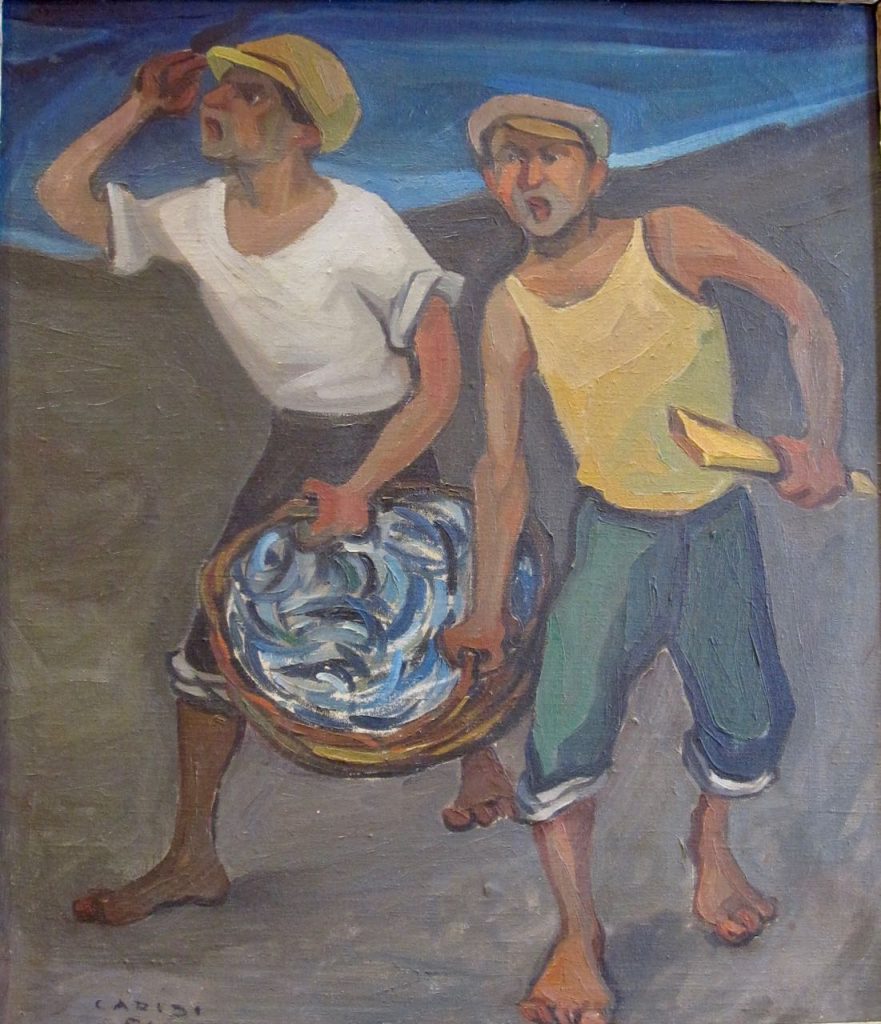
Pescivendoli – Fishmongers, 1951 – Vincenzo Caridi (1913-1989), oil on canvas 69 x 59 cm,
And the “Gruppo di Figure” of the same year by realist painter from Reggio, Nunzio Bava (1906-94) depicts a group of figures, workers in repose, sitting together, each with his or her own thoughts, perhaps a commentary on contemporary society.
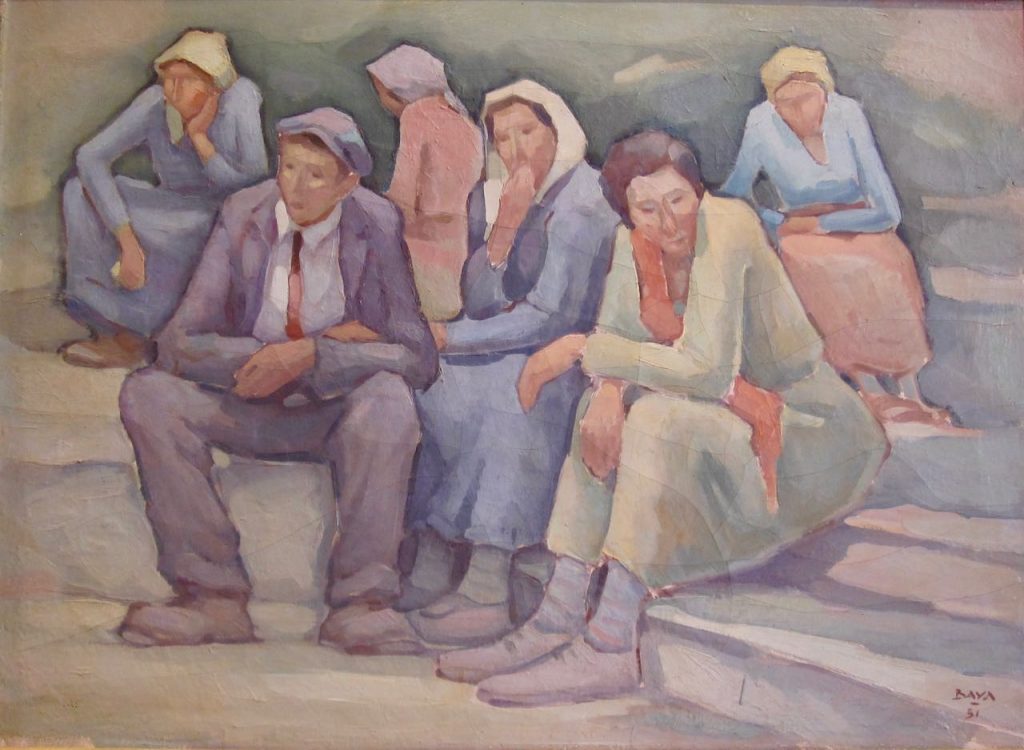
“Gruppo di figure” – Group of Figures, 1951 by Nunzio Bava (1906-94), oil on canvas, 65 x 90 cm
VISIT THE PINACOTECA CIVICA OR THE CIVIC ART MUSEUM OF REGGIO CALABRIA
So when you come to Reggio for the Riace Bronzes, stay for a visit to one of the city’s other museums. The Pinacoteca Civica is, as the word implies, largely a gallery of paintings and is located at the corner of Corso Garibaldi and Via Osanna. The museum is closed on Mondays and national holidays and is currently open Tuesday to Sunday from 9 am to 1:30 pm and 2:30 to 7 pm.
Stop in, have a look around. You won’t regret it, and the best part? Admission is free!
Visit the art museum of Reggio Calabria on a Calabria tour. Stay up to date with the art museum on the Pinacoteca Civica di Reggio Calabria Facebook page. While in Reggio, in addition to the spectacular Riace Bronzes and other worthy artifacts at the Archeological Museum in Reggio Calabria, don’t miss the Palazzo della Cultura with more local art in addition to a collection confiscated from a Mafia boss and the Museo San Paolo, an eclectic mix of icons, paintings, sculpture, silver and books.
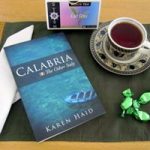 Interested in more of what there is to see and do in Calabria, the fascinating region in the toe of the Italian boot? Check out Calabria: The Other Italy, my non-fiction book about daily life, history, culture, art, food and society in this beautiful southern Italian region.
Interested in more of what there is to see and do in Calabria, the fascinating region in the toe of the Italian boot? Check out Calabria: The Other Italy, my non-fiction book about daily life, history, culture, art, food and society in this beautiful southern Italian region.
“Like” Calabria: The Other Italy’s Facebook page and follow me on Karen’s Instagram and Karen’s Twitter for more beautiful pictures and information.
Sign up below to receive the next blog post directly to your email for free.

Comments 12
Gorgeous venue and works of art.
Need to visit Reggio again. 😉
Author
Yes, the setting is also beautiful and the museum is so conveniently located if you’re out for a stroll in the center of town.
Thanks for the info on the museums and what to expect.
Author
My pleasure. I hope more people visit as it’s a shame when tourists flock to see the famous works at the better-known museum, but neglect other valid options.
BEAUTIFUL artwork !! I enjoyed ALL of them, but I especially liked the “Riposo di contadino”! Certainly appears to be VERY worthy of a visit !!! 😄
Author
Yes, although he’s tired, his kitchen looks so inviting with the pot over the fire, the large gourds, the water jar and wine bottle, and of course the characteristic image of Calabria, the string of hanging peperoncino.
What a lovely space! I enjoyed all your photos, especially the first one with you. 🙂 Thank you for the details!
Author
Thanks, glad you enjoyed it.
Love the pescivendoli! Ciao, Cristina
Author
Me, too. I can almost hear their voices.
Wonderful article, Karen. I never would have guessed Calabria was home to such stunning works of art. Although, there are hidden treasures throughout Italy, so why not Calabria as well? I am glad you are there to promote this region!
Author
Thank you. Calabria is often underestimated. In addition to the well-known Riace Bronzes and other works in Reggio’s world-class archeological museum, for example, the region hosts numerous other fine archeological and art museums. And as I mentioned in the post, I really like the localness of many of the works as they speak to the people, landscape and history of the region.